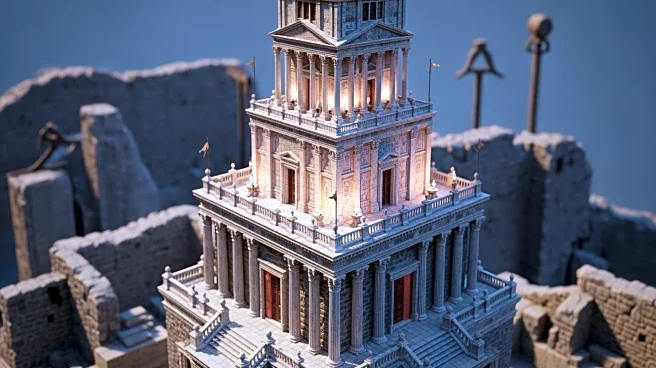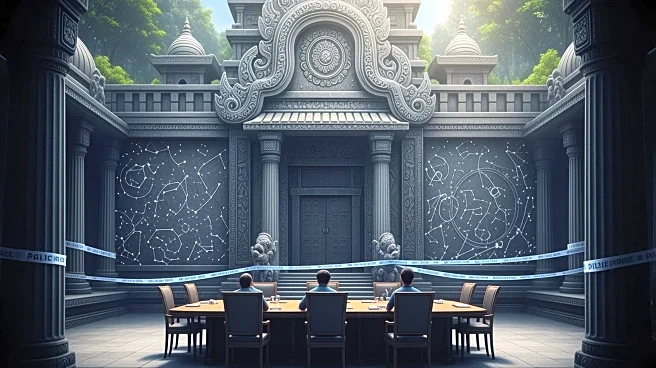What's Happening?
Archaeologists from Berlin's Humboldt University have digitally reconstructed the residential towers of Pompeii using 3D models. These towers, once thought to be simple structures, have been revealed to contain luxury dining spaces with panoramic views.
The project, known as Pompeii Reset, challenges previous assumptions about ancient architecture and social life in Pompeii's wealthiest homes. By using laser scanners and detailed photography, researchers have created 3D models that extend the digital representations of these structures upwards. The findings suggest that these upper floors were not merely simple spaces but included high-level rooms alongside more modest ones.
Why It's Important?
The reconstruction of Pompeii's residential towers provides new insights into the architectural and social dynamics of ancient Roman society. By revealing the luxurious nature of these upper floors, the study challenges long-held beliefs about the use of space in Pompeii's elite homes. This research enhances our understanding of the social hierarchy and lifestyle of ancient Romans, offering a more nuanced view of their living conditions. The project also demonstrates the potential of modern technology, such as 3D modeling, to uncover and reinterpret historical sites, contributing to the field of archaeology and historical studies.
Beyond the Headlines
The use of 3D modeling in archaeology represents a significant advancement in the study of ancient sites. This technology allows researchers to visualize and reconstruct structures that have long been lost to history, providing a more comprehensive understanding of past civilizations. The project also highlights the importance of interdisciplinary collaboration, combining archaeology, technology, and historical research to achieve new insights. As technology continues to evolve, similar methods could be applied to other historical sites, potentially transforming our understanding of ancient cultures and their architectural achievements.














